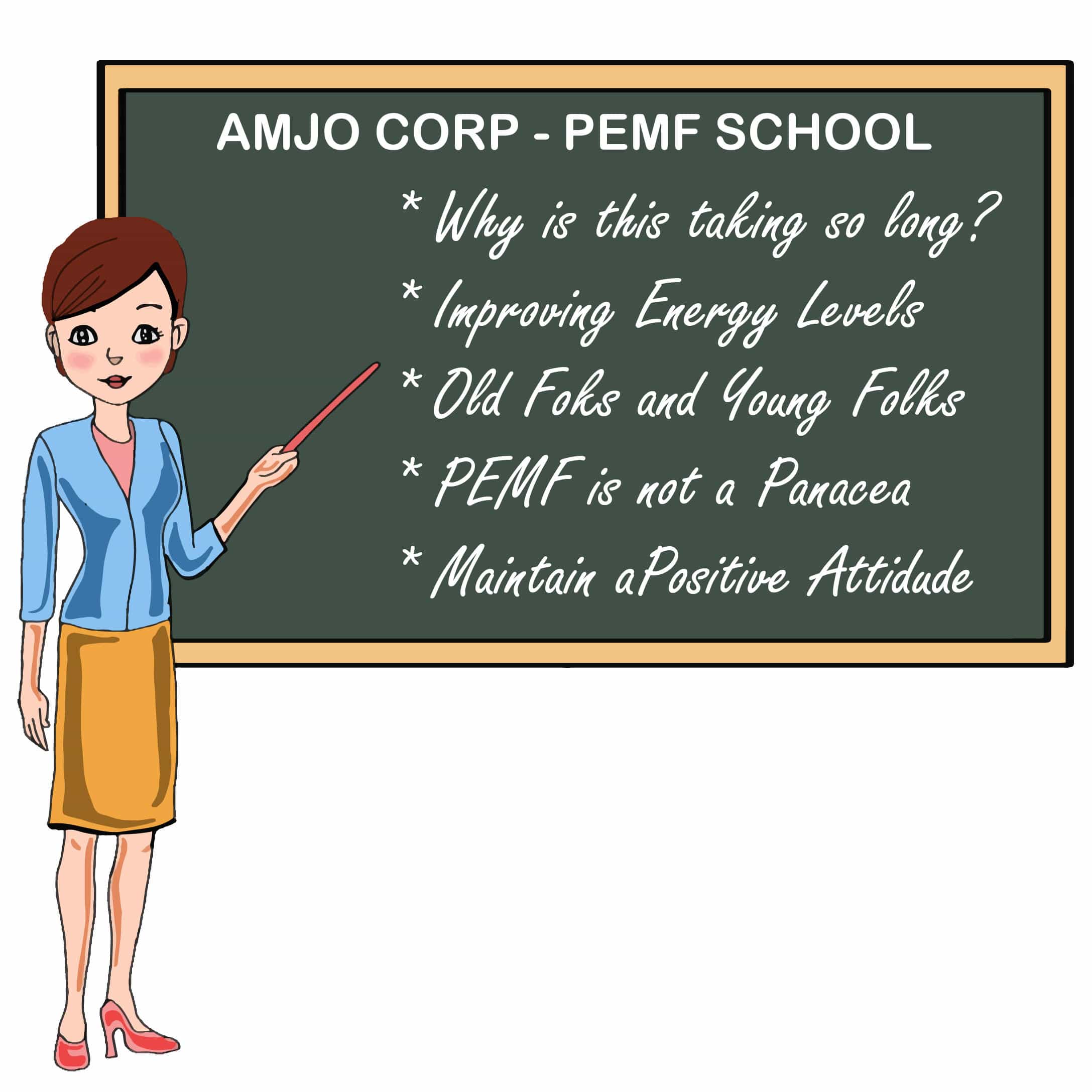Set Realistic Expectations
My mother used to say “Time wounds all heels!” Sometimes healing takes a long, long time. With PEMF, healing normally happens more quickly but, the answer to the question is dependent on what health condition is being treated and whether the appropriate PEMF intensity is being used.
In the prior PEMF-SCHOOL article titled ‘Effective PEMF Requires High Intensity‘ we discussed this, and here we will bring it up once more. If the problem is about our energy levels, then the result tends to be more rapid we notice the improvement from day to day. It takes time! If the problem is physiological and the PEMF intensity is appropriate, then some results should start to appear within the first two weeks. For long-term, chronic issues, results can be slower to come and everyone needs to be aware that results may never reach the level desired.
In these cases, minimal improvement may be seen within the first month if any improvement is going to occur at all. Maximum improvement may take months or years, or it may never be achieved. For example, organ failure is unlikely to respond to PEMF treatment.
We offer two types of PEMF Systems
[su_button url=”https://www.flashpemft.com” target=”blank”]The FLASH – For Immediate Relief of Many Pain Symptoms[/su_button]
[su_button url=”https://www.curatron.us” target=”blank”]The Curatron 2000 to treat the Underlying Problem[/su_button]
Results don’t depend on PEMF intensity except as it relates to the appropriateness of the intensity. Generally, high intensity speeds the process, but sometimes, one needs to back off a little. Remember, more isn’t always better but if the appropriate level is higher than what is being used then results will take longer.
Maybe it’s Magic
Perhaps PEMF isn’t magic, but sometimes it does come very close! PEMF does not do the body’s healing; it simply increases the body’s own ability to repair and regenerate itself. Results can also be affected by the user’s state of mind. Depression and anxiety can slow or appear to slow healing. After all, when we are depressed or anxious, the body is being flooded with neurochemicals that PEMF has to struggle to overcome in addition to the relative perception a human brain has about how fast or slow something is occurring. Some people with naturally negative personalities may never achieve positive results; pain management research has shown that even placebos can have less than positive outcomes in those of us with a negative attitude.
Depending on a person’s age, the body heals itself of physical problems at a predictable rate. For example, broken bones in younger bodies tend to heal more quickly naturally. Broken bones in older bodies tend to heal more slowly. In either case, PEMF will in all likelihood speed the process by a factor of roughly 2X but the older body will heal more slowly than that of the younger.
One of our goals is to manage expectations and to do that we need to understand the nature of the problem and determine whether PEMF is likely to be helpful. Perhaps in some cases, PEMF is not the answer. Sometimes we advise against PEMF.
Things to consider:
Damage to a human body rarely happens instantly, and the longer a person has been living with a problem, the longer it’s going to take PEMF to help repair that problem.
Some tissues do not respond well to PEMF, particularly those with naturally low blood flow or naturally slow regeneration. For example, ligaments, tendons, spinal disks, and brain cells either don’t regenerate well naturally, or they have low blood flow that slows down healing.
Some damage is too severe to be healed without drastic medical intervention. For example, sometimes only a joint replacement will fix a knee or a shoulder or a hip. PEMF can often help in these situations, however, by helping the body strengthen the tissues surrounding a joint so the surgery has a better chance of success or by accelerating the recovery time after the surgery.
Nothing can force a body to heal faster than an optimal rate. We believe that PEMF helps the body achieve that optimal rate.
Some people have a naturally high sensitivity to electromagnetic fields. PEMF can still be an option, but the intensity of the therapy may need to be decreased. Sometimes, decreasing intensity is not the answer, perhaps decreasing the treatment time can be very effective.
Achieving positive results is often a matter of using a PEMF treatment predictably, reliably, and regularly. Sporadic use can lead to unpredictable success.
There are two Curatron Systems.
The Curatron 2000 family was created in 2000. We (Amjo) sold our first system early in 2000 and we’ve been selling and supporting the Curatron systems ever since. We have more experience and knowledge of the Curatron systems than any other distributor. Call us and find out! (CONTACT INFORMATION)
- REAL PEMF Machines
- Curatron 2000 HT (Home Therapy System)
- Curatron 2000 XP (Our advanced Home System)
- Curatron 2000 XPSE (Special Edition XP with 50% higher Intensity than the XP
- Curatron 2000 PC (Clinical System – controlled by your PC or MAC Computer)
- Curatron 2000 3D (Advanced Clinical System with Intensity Levels up to 1600 Gauss)
- Impulse or Ringer Systems
- Curatron FLASH (Introduced in 2017 and is our first foray into the world of Impulse Systems


